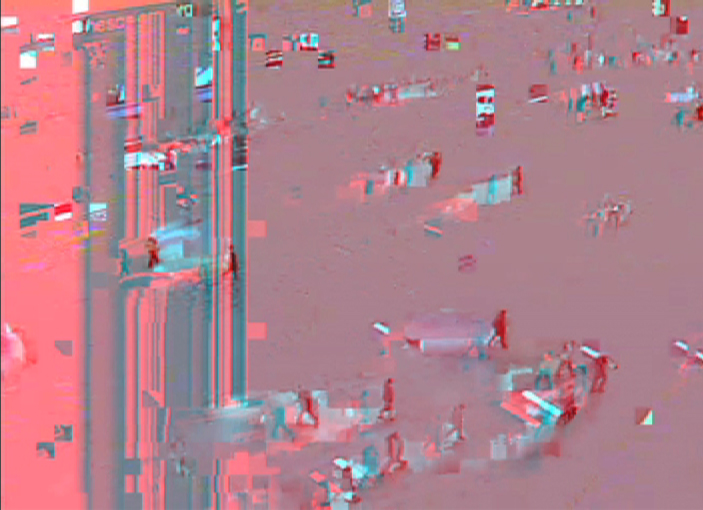
Paula Albuquerque, Realtime Ellipsis – Video Installation 2012. Source: made with footage found on Earthcam.com
Talking to Paula Albuquerque about Ghostly Images in New Media
In this series, artists talk about their work-in-progress projects. After earlier conversations with Curdin Tones and Tine Melzer, Nim Goede now speaks with artist Paula Albuquerque, who is currently working on a project about ghostly apparitions in new media.
Nim Goede: Can you give me a short introduction to your latest project?
Paula Albuquerque: ‘I’m interested in studying the way in which audiovisual media have the capacity to produce images that can then be interpreted as being representations of apparitions and ghosts. Although this phenomenon is part of a tradition that reaches back to early photography, I am interested in studying this phenomenon in new media, by trying to establish the limits of their ability to faithfully represent reality and their capacity to create images of a spectral nature. The media that I’m looking at are documentary media like CCTV, military drone vision and fictional media like holography and VR, which, despite their very controlled environments, still somehow create ghostly imagery.’
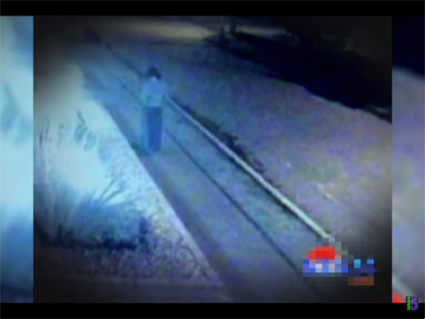
Paula Albuquerque, Beyond the Violet End of the Spectrum – Specter Visualization in the Age of CCTV and Drones WIP 2018. Source: Made with footage found on Liveleaks.com
NG: How did you become interested in this topic?
PA: ‘I was curious about how death is portrayed on the internet, my medium of choice being the webcam. This is such a powerful documentary medium. If you look on YouTube you will find several videos of supposed ghost sightings. They evoked an interest in looking into the longer tradition that these videos are a part of. I then traced this phenomenon all the way back to the emergence of spiritual photography in the 19th century. So how did this come about? In analog photography when light hits the camera lens in a certain way or if the dark chamber of the camera is not properly closed off strange apparitions can appear in the photograph. Since people have a tendency to identify shapes as humanoid, this resulted in people identifying these artifacts as ghosts. What is worth noting here is that before analog photography there was no mechanic way to record a ghost image (no matter what people think a ghost is). Although there is a long tradition of representations of ghosts in drawings and literature, the idea that an automatic recording device like photography could document these apparitions was new in history. I’m not suggesting that these apparitions were there and that the camera could thus record them, but rather that the medium has certain inherent capacities that enable it to produce specters, and this is what I’m interested in to exploring further in relation to new media. While some of the videos of ghost sightings on YouTube are ridiculous, others can really tell you something about the medium.
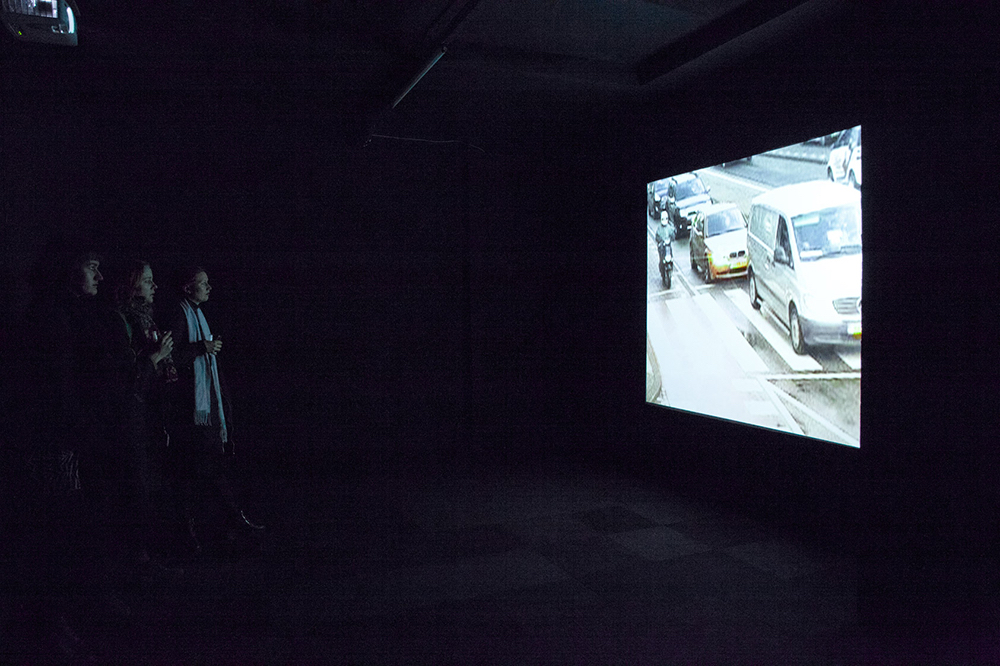
Paula Albuquerque, Solo exhibition at Stedelijk Museum Bureau Amsterdam 2016. Photo by Lisa Sudhibhasilp.
My current working title for this project is: Beyond the Violet End of the Spectrum. This claim refers to the naturalist scientists who were interested whether they could record things that reached beyond the range of wavelengths that the eye can register. I want to explore if this is also the case with digital media. There is this fundamental distinction between analog and digital media when attempting to trace an event back to the moment when it occurred. With analog photography you have basic indexicality; light bounces of the object and imprints the light sensitive emulsion. Yet digital photography is a whole different story. There is no physical emulsion. With the digitalization of most records in the past 10 years some have argued that we are undergoing a dematerialization. Yet I think that the digital is also a material, even though it emplies a different form of indexicality than analog media, and I want to explore this. There are many ways to go about doing this, one of them being through digital forensics. This entails tracing back all the little scars that have been left in the data, all the inscriptions, all moments of reaction and transmission, exploring all devices in which the data has been stored and all the channels it has traveled across. I want to figure out at what moment the specter enters these digital media. While this might happen in post-production, it can also be the result of a transmission failure or a faulty update. This also begs the question of how to distinguish between true documentary evidence and spectral imagery.’
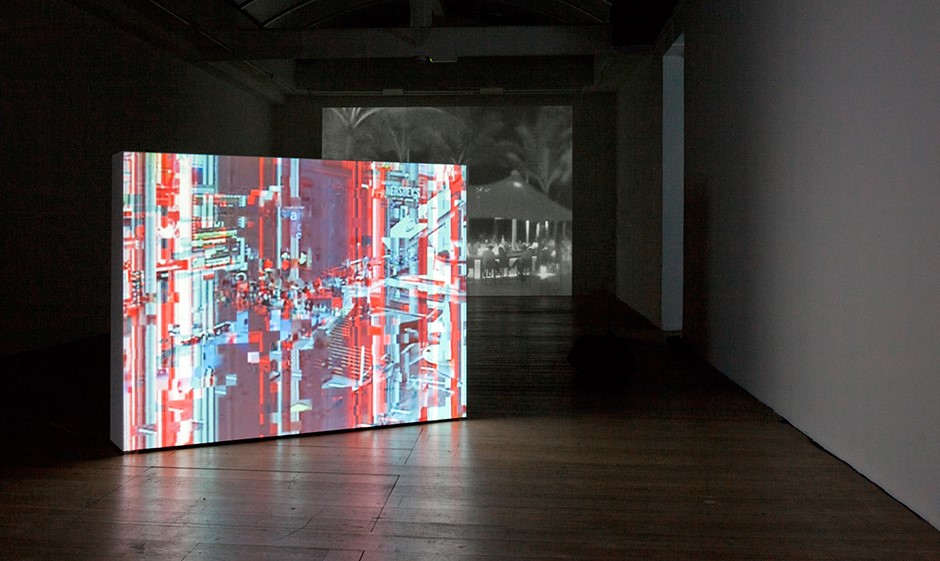
Paula Albuquerque, Solo exhibition at Stedelijk Museum Bureau Amsterdam 2016. Photo by Lisa Sudhibhasilp.
NG: Can you perhaps describe some of your works in which you explore this phenomenon?
PA: ‘As part of my PhD project I’ve already gathered quite a vast collection of CCTV footage that I’ve experimented with. In 2012 I created a work called Realtime Ellipsis (2012), which is about the fact that in the webcam as a cinematic medium the ellipsis occurs when the action is still going on. When you are looking at the camera footage and a transmission failure occurs the image either freezes or it becomes pixelated. In this work people are walking on Times Square and they are leaving these strange pixelated trails behind which look very ghostly. The moment the image picks up again these people have already left the frame. So even though you know that they’ve left the screen, they still leave these traces. You can’t pinpoint the exact moment a certain action occurs in the real world, because the medium doesn’t allow you to, yet at the same time the medium produces something extra that gets left behind in databases forever.
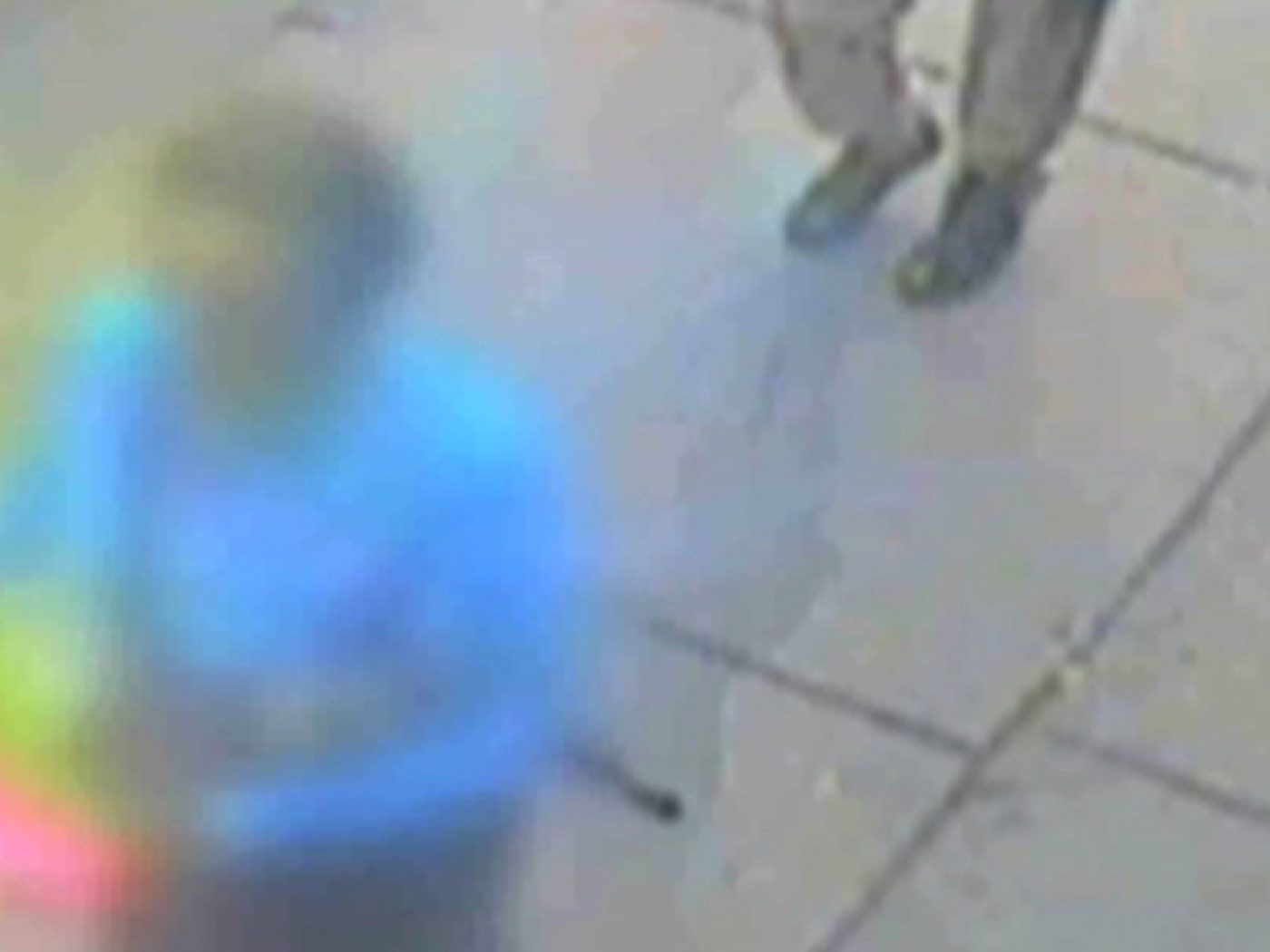
Paula Albuquerque, OnScreen Débris – Video Installation 2014. Source: made with footage found on Youtube.com
As examples of more recent experiments there’s this video of an old man in a shop who is taking things out of the shelf and then there’s this Poltergeist-like manifestation of a box of tea coming out of the shelf and just floating there after which it falls to the ground. The man hears it, turns and picks it up and puts it back in the shelf. Meanwhile another box has moved out of the shelf and has fallen to the ground, the man again turning to pick that one up. In this other experiment I combine these kinds of videos, editing them in a way that it could always be the same manifestation moving from one video to the next. These are not actual works yet, but they are becoming works through the fact that I present them and that people react to them. You would be surprised about how people react to them! Some people laugh, but others get really uncomfortable and scared or even angry. For me this is a way of working as well, to observe how people react, to see that it doesn’t leave them indifferent. This then makes me go back to looking at the material and to reorganizing it. This is the stage of the research process I’m in right now.’
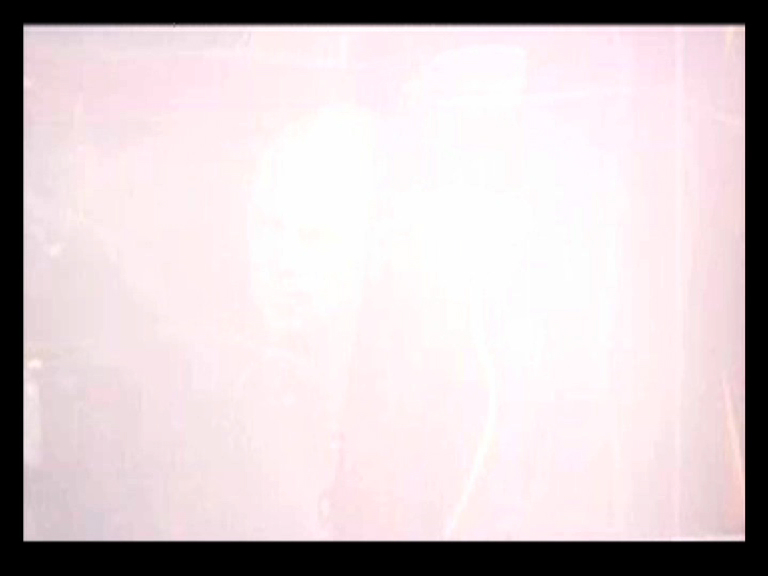
Paula Albuquerque, Portraying A’dam, Chapter 3 – Film 2014. Source: made with footage found on Earthcam.com
NG: What are some of the implications of this study?
PA: ‘Well, media create stereotypes, like gender or racial stereotypes for instance, and I believe that this is somehow linked to their capacity to produce otherworldly apparitions. So for example, the emulsion used in analog photography is sensitive to light and depending on the exposure time you can define the features of the person being photographed. The default settings on any camera are made to define the features of white skin properly, but when it comes to people with darker skin their features are made to appear as smudges or shadows. This has huge repercussions for the stereotyping of people that are not milky white. Since most crimes are now solved by visual evidence, having people with darker skin appear as shadows in visual evidence makes them more difficult to identify, thus in essence making each and every person with darker skin a potential suspect. So in a very real sense you could state that this medium produces racial stereotypes. And even though most cameras are now digital, the standard settings on digital media are still using exposure modes that produce the same effects.
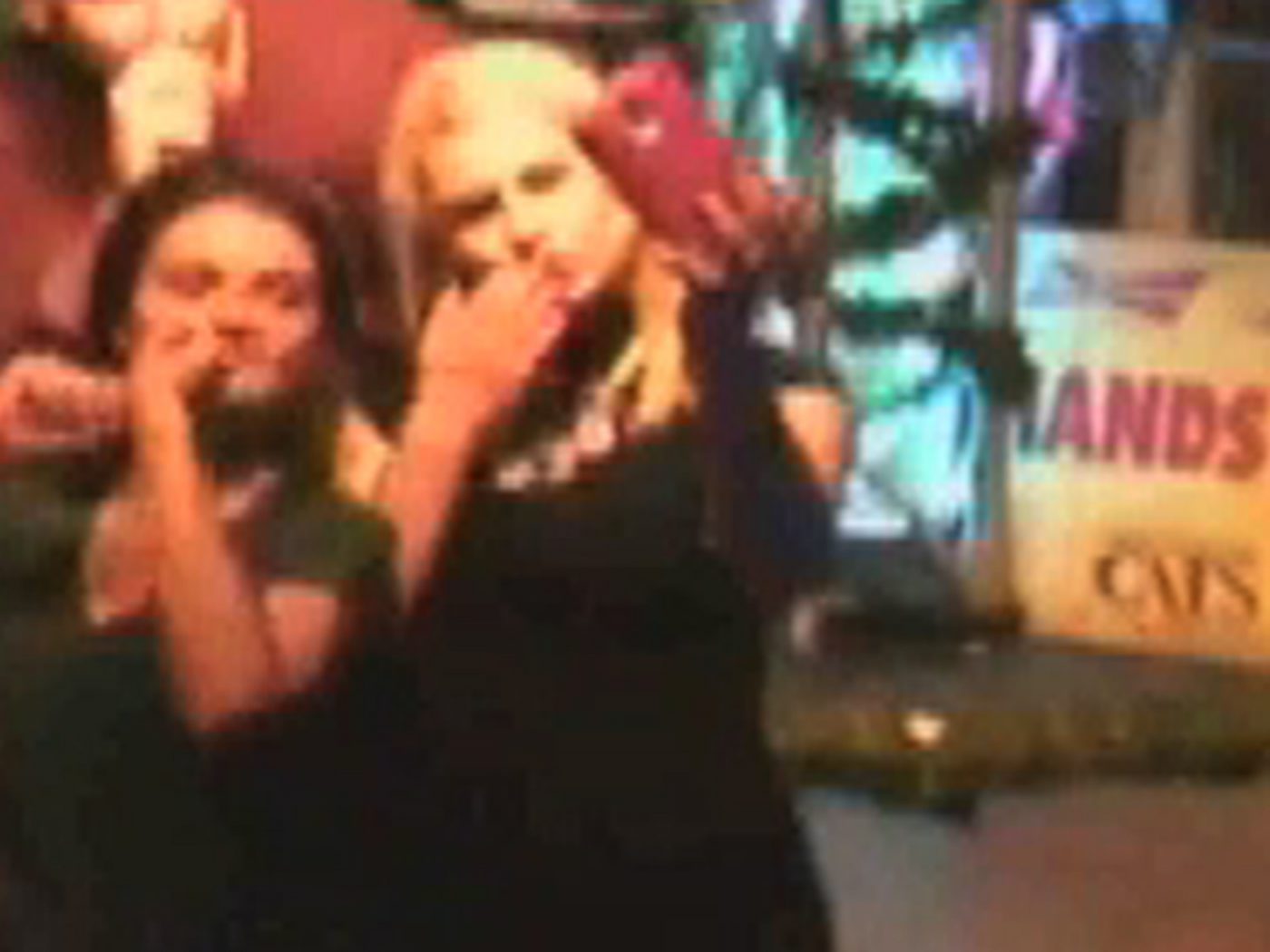
Paula Albuquerque, Live Streaming US – Film 2016. Source: made with footage found on Earthcam.com
I’m now examining whether a similar process is at play in the new media that I’m investigating. For instance, I’m studying how heat sensors equipped on military drones, used for spotting potential terrorists inside buildings, are capable of producing visions of people who aren’t really there. Even though we are dealing with very advanced technology here, this doesn’t mean that these technologies don’t have their limitations. It’s these limitations, but also their potentials that I want to explore. But besides that I want to explore how the imagery produced by these drones contributes to the subjectification of the people they represent. We all have an image of the people living in the countries under constant drone attacks. I want to unravel how drone imagery shapes this image, but to develop this further I will have to collaborate with people involved in developing drone optics. For now this is just an intuition I’m following.’
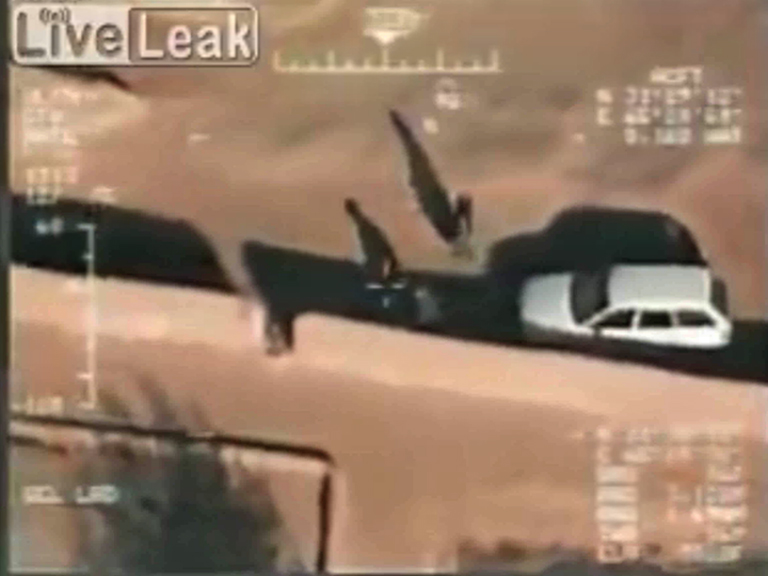
Paula Albuquerque, Beyond the Violet End of the Spectrum – Specter Visualization in the Age of CCTV and Drones WIP 2018. Source: made with footage found on Liveleaks.com
Nim Goede
PhD candidate at Amsterdam School for Cultural Analysis studying Art & Neuroscience.


